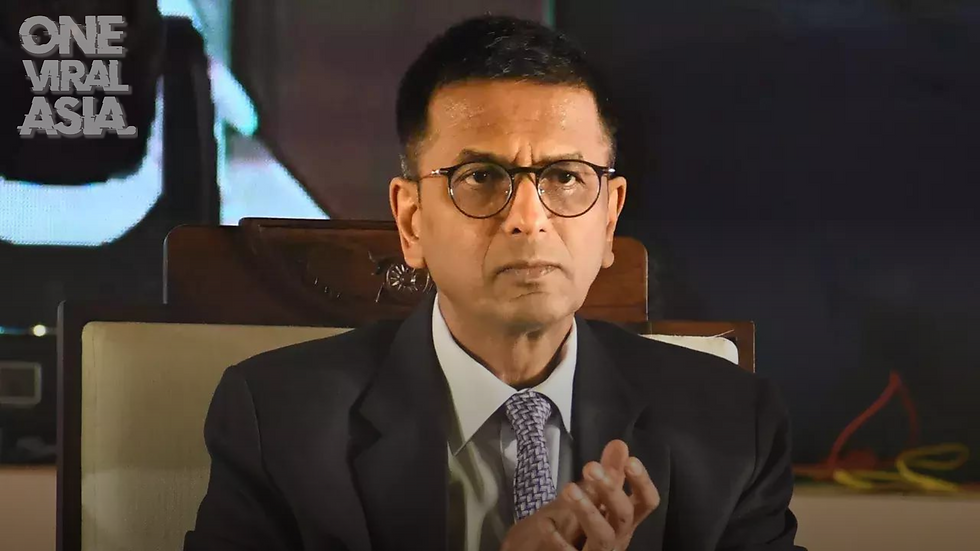Constitution Bench Grapples with Complexities in Historic Article 370 Challenge
- One Viral
- Aug 22, 2023
- 3 min read

| 22 August 2023
In a significant legal endeavor, a five-judge constitution bench led by the Chief Justice of India (CJI) is currently embroiled in a marathon of hearings, dissecting the intricacies of a batch of petitions that challenge the momentous abrogation of the provisions of Article 370 and the Jammu and Kashmir Reorganisation Act, 2019. The latter enactment resulted in the reconfiguration of the erstwhile state into two union territories: Jammu and Kashmir, and Ladakh. Amid the intense legal wrangling, the Supreme Court, on a recent Monday, rejected a petition that sought a formal declaration affirming the constitutional validity of the Article 370 abrogation.
Under the stewardship of the CJI, the five-judge constitution bench is delving into the heart of the matter, accompanied by Justices Sanjay Kishan Kaul, Sanjiv Khanna, BR Gavai, and Surya Kant. The hearing marks the eighth day of an intricate legal tussle, as senior advocate Dinesh Dwivedi took center stage, presenting arguments that scrutinized the historical underpinnings of the contentious Article 370.
Dwivedi initiated the discussions by asserting that the standstill agreement was a prerequisite for the merger letter, highlighting historical agreements that set the context for the debate. Citing the Cabinet Mission Memorandum and the Indian Independence Act, he drew attention to the differing pathways that states had traversed to accede to India.
"The conditions added in favor of Kashmir—that we are not bound by the Constitution or the future constitution, the internal sovereignty rests with the ruler, the union of India cannot acquire land in Kashmir—these were different," Dwivedi argued, painting a nuanced picture of Kashmir's unique position.
Central to the discussions was Article 238, with the CJI expressing curiosity about its significance. Dwivedi posited that Kashmir's case was distinct from other states due to the presence of this article, and the debates among the framers of the Constitution provided insights into the intent behind Article 370.
Justice Chandrachud probed further, challenging the assertion that the Constituent Assembly's debates constituted an assurance to Jammu and Kashmir, raising questions about the implications and interpretations of the Constitution in relation to the region.
The hearing also witnessed the involvement of senior advocate CU Singh, who drew parallels between historical constitutional developments and the reorganization of states, contending that the conversion of a state into a union territory was a profound alteration requiring more than a simple majority in the Parliament.
In a compelling exchange, the CJI emphasized the necessity of understanding the historical evolution of Article 370 and its interplay with other constitutional provisions. The discussions traversed territories ranging from the devolution of power to the creation of union territories, threading together the historical fabric that led to the present conundrum.
Senior advocate Sanjay Parikh took the floor to assert the supremacy of the Jammu and Kashmir constitution, illustrating how the people's sovereignty was articulated through this document. This constitution, he argued, was the embodiment of the people's democratic aspirations.
As the constitution bench embarked on a journey through the historical labyrinth, the intricacies of Article 370 and the complexities of its abrogation came to the fore. The hearings shed light on the delicate balance between constitutional principles, historical precedent, and the aspirations of the people, evoking the timeless adage: "The past is prologue."
The proceedings, despite their complexity, offer a unique window into the evolution of India's constitutional framework and the interplay of legal thought, historical context, and democratic ideals. As the bench continues its deliberations, the nation watches with bated breath, awaiting a verdict that could potentially reshape the contours of a vital aspect of India's legal landscape.








Comments